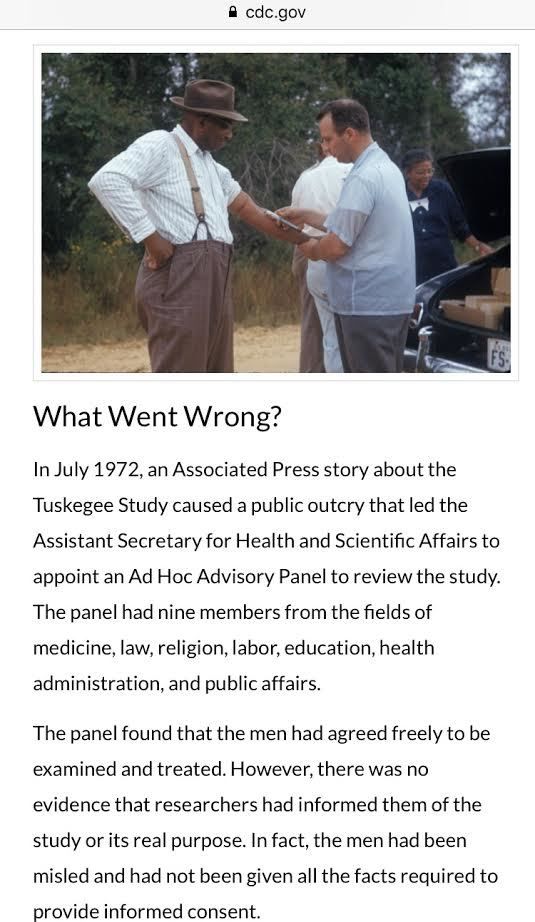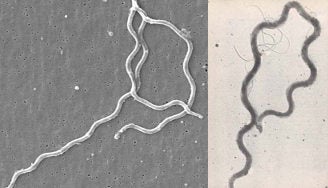The Nazis Set the Bar for Inhumane Medical Experiments
With perhaps the exception of White House Press Secretary Sean Spicer, many of us associate the German Nazi regime with the worst of the worst of humanity’s potential. For all there is to celebrate about the merits of Homo sapiens, when our human curiosity and ambition isn’t tempered by our human compassion, strong arguments can be made that at our worst, we are unmatched by any other Earthbound creature in our potential for cruelty.
This cruelty was exemplified, of course, by the Holocaust, most often associated of course with the genocidal attempt to eradicate certain populations from the planet that ended up killing over six million Jewish, LGBT, disabled and other people. But there was more to the Holocaust than this. Having visited the U.S. Holocaust Memorial Museum several times, two exhibits have been forever etched into my memory: The first is a room piled high with old shoes—all that’s left of so many human lives after (yes, Mr. Spicer) Hitler gassed them to death with the chemical weapon Zyklon B. (To be clear to Mr. Spicer and his defenders, many of these people were “Hilter’s own” German and Austrian citizens—Jewish, yes; LGBT, yes; disabled, yes, and as Hitler ruled as chancellor-emperor, his own people. I still need to know by what measure the White House considers any citizen its leader’s “own,” if that measure is not citizenship—because the consequences of misunderstanding this for some of us could be dire.)
The other exhibit that I’ll never get out of my head is one that displays via archival video footage medical experiments on live human beings. The word unconscionable doesn’t do the atrocity justice.
...Or Did They?
Eighty-five years ago, in 1932—coincidentally during Adolf Hitler’s political ascent in the decade before World War II—the United States Public Health Service (USPHS) commissioned a study to gain a greater understanding of syphilis. Syphilis holds a special place in the history of humankind, having plagued the continent of Europe for 500 years, bringing madness, disfigurement and death to countless millions. The disease is caused by Treponema pallidum, a relatively rare type of bacterium called a spirochete (rhymes with parakeet when spoken) that swims like a water serpent and uses its unique spiral shape to drill through human tissues. Hallmark symptoms can include (early infection) genital lesions called chancre sores, (2-8 weeks after infection) a rash and flulike symptoms, including joint pain, severe fatigue, etc., (a year to decades after infection) a period with no obvious symptoms, and (3 years or longer after infection) severe damage to the heart, eyes, brain, nervous system, bones and joints.
Over time, people came to recognize that syphilis frequently causes madness or mental illness in addition to other observable symptoms, culminating in death. But in the pre-medical science era no one knew why. The USPHS decided to find out—and in doing so, the United States federal public health agency committed one of the greatest known atrocities by our government against its own people.
Many people today have a cursory knowledge of what we today refer to as the Tuskegee experiment, or the Tuskegee study, as the U.S. Centers for Disease Control and Prevention (CDC) now calls it. The formal name of the study is a bit more difficult to stomach because of what it says about our nation’s history.
“Tuskegee Study of Untreated Syphilis in the Negro Male” was unabashedly unethical. It “enrolled” (without their knowledge or consent) 600 black men, 399 who had syphilis and 201 who did not, to study the etiology of syphilis infection when left untreated. In other words, the project’s purpose was to watch 399 human beings’ bodies slowly degrade and ultimately succumb to the disease. While the federal agency commissioned and administered this study, it is important to note that medical doctors carried out the work of documenting these patients’ slow deaths, never telling revealing to them that they had the deadly disease. This was an egregious crime against humanity from the beginning, but by 1945 the evolution of medical science ironically transformed a practice in cruel indifference into what was an organized passive murder spree. What changed? By 1945, penicillin had become widely known, understood and available as a cure for syphilis—at any stage of the disease. But at that time there was no Internet, no common means through which ill people could really research their own symptoms even if they would, and even if they believed themselves to be under the care of competent and caring doctors. Both the USPHS and medical professionals involved in the study had decades-long opportunities to inform patients that they were infected with a disease likely to be terminal and to cure them, and they chose not to do so.
The study continued for 40 years, until 1972. During that time, the body of complicit entities expanded to encompass medical journal publishers and editors and their readers, as journals openly and unashamedly published articles documenting the study and its findings to date. From the CDC website:
1934 First papers suggest health effects of untreated syphilis.
1936 Major paper published. Study criticized because it is not known if men are being treated. Local physicians asked to assist with study and not to treat men. Decision was made to follow the men until death.
It is notable that to this day, the CDC’s editorial attitude toward the study offers no apology or any frank admission of wrongdoing. Some would say that the CDC’s summary of the study takes a “just the facts” approach, but I can’t accept that. The cold inhumanity of the “decision was made to follow the men until death” statement chills me. And then there’s this:

I try to always admit my biases up front and to qualify opinion-based statements with “this is just my opinion, but...” In this case, I don’t think this is just my opinion: This timeline is disturbing. The CDC itself asks “What went wrong?” Its answer to this question nowhere suggests that the design of the study was wrong, that it was wholly unethical to use unconsenting human lives as laboratory animals, to watch people’s bodies and minds slowly degrade up to the point of death even when all of them could have been fully cured. As a professional editor of 20 years, I can’t overlook the passive refusal to accept any accountability for the study’s ethical failure. And it’s not even that passive: By placing the statement “the panel found that the men had agreed freely to be examined and treated” immediately before “however, there was no evidence that researchers had informed them of the study or its real purpose,” this recounting makes a subtle but unquestionable implication that the participants were complicit, having agreed. (But agreed to be treated, not mistreated.)
Since this study was carried out by the USPHS, why even involve the CDC in the discussion? In a 1978 Harvard University Hastings Center Report article, “Racism and Research: The Case of the Tuskegee Syphilis Study,” Allan M. Brandt describes the CDC’s role in the study (which the CDC notably does not disclose on its website):
When penicillin became widely available by the early 1950s as the preferred treatment for syphilis, the men did not receive therapy. In fact on several occasions, the USPHS actually sought to prevent treatment. Moreover, a committee at the federally operated Center for Disease Control decided in 1969 that the study should be continued. Only in 1972, when accounts of the study first appeared in the national press, did the Department of Health, Education and Welfare halt the experiment. At that time seventy-four of the test subjects were still alive; at least twenty-eight, but perhaps more than 100, had died directly from advanced syphilitic lesions.1 In August 1972, HEW appointed an investigatory panel which issued a report the following year. The panel found the study to have been "ethically unjustified," and argued that penicillin should have been provided to the men.
More Than Tuskegee
In my opinion, the CDC should admit greater accountability for its role in the Tuskegee experiment, or at the very least the agency should revise its summary of events to flatly state the objective truth that the nature of the study violated medical ethics and human rights. What went wrong with the study? Or in other words, who was to blame? According to that CDC timeline, the answer to “what went wrong?” is “the Associated Press reported the event.” It’s not merely semantics to observe that what went wrong was the design of the study; the AP not only isn’t what went wrong about it, the AP is the only thing that went right. Otherwise, most of those who managed to survive until 1972 would have died at the hands of the federal government, doctors and researchers who were complicit.
It’s disturbing to think about, but the Tuskegee experiment—which specifically targeted black Americans—is neither the only federally administered study that violated human rights nor the only one that specifically targeted an ethnic or other disadvantaged population.
As the AP’s Mike Stobbe reported in 2011:
Shocking as it may seem, U.S. government doctors once thought it was fine to experiment on disabled people and prison inmates. Such experiments included giving hepatitis to mental patients in Connecticut, squirting a pandemic flu virus up the noses of prisoners in Maryland, and injecting cancer cells into chronically ill people at a New York hospital.
And:
Attitude similar to Nazi experiments Some of these studies, mostly from the 1940s to the '60s, apparently were never covered by news media. Others were reported at the time, but the focus was on the promise of enduring new cures, while glossing over how test subjects were treated.
You should read Stobbe’s full article for an overview of more than 40 studies of this nature.
And the crimes aren’t limited to the etiological studies he describes: Many people know, and too many don’t, about our federal intelligence agencies’ human mind-control experiments that sound like “crazy conspiracy theories” today, but which were carried out for 25 years, and which were extensively reported by The Washington Post when the federal government released documentation in 1977.
These studies, known as Project MK-ULTRA, BLUEBIRD, ARTICHOKE and others, involved the CIA commissioning hospitals to administer LSD and other (many unspecified) mind-altering drugs to patients in varied attempts to alter the way they think and determine whether the human mind can be programmed to carry out Manchurian Candidate-type tasks for military purposes, segmented into separate personalities with no awareness of one another.
If you’re thinking of running north to Canada, not so fast. A 1985 Washington Post story details the same experiments being conducted—by the American CIA—in Canada, as well.
Notably, many of these studies were carried out in (and obviously, then, with the compliance of) prestigious the teaching hospitals of prestigious universities, including Georgetown University Hospital in Washington, D.C. and McGill in Canada, oftentimes on terminally ill and orphaned patients. In all cases, without patients’ knowledge or consent.
The Past Is the Past...Right?
One of my favorite quotes is attributed to William Faulkner: “The past is never dead. It’s not even past.”
In the context of this essay, the most pertinent lesson from that quote relates to a phenomenon I’ve noticed among human behavior: We have a bias toward an optimistic, perhaps even ideal notion of the present. Yes, we learn from history that great atrocities have occurred in the past. We learn from Oprah that Oprah learned from Maya Angelou “when we know better we do better.” I like this quote, too. Sometimes I see truth that reflects it. Sometimes I don’t.
May is Lyme Disease Awareness Month. I live with Lyme disease. I write about Lyme disease. Almost every time I publish an article, I get at least one email or tweet from someone who tells me I’ve got the story all wrong: If I want to tell the truth, I will tell the story of Erich Traub, a German Nazi doctor who famously proposed the notion of non-lethal warfare by introducing debilitating-but-not-necessarily-deadly diseases to enemy territories through ticks. I’ve read about Traub. He was real. Following World War II, after the Allied Powers defeated the Axis Powers, the clandestine-sounding (but well documented) Project Paperclip to divide up valuable Nazi party members and import them into the United States for our own benefit. The United States space program’s success is in great part due to one of these Nazis, Wernher Von Braun, who invented the rockets that took human beings to other worlds—or at least the Moon. Traub was another scientist whom we imported for our own purposes, and there is evidence of Traub having been employed in animal-based biomedical research here before returning to Germany. Supposedly, he visited a high-security animal research facility near Long Island called Plum Island. Plum Island is a mere 11 miles from Old Lyme, Connecticut, where Lyme disease was first described as a rare form of rheumatoid arthritis in 1977. (Fun fact: Lyme disease is named for the town where it was discovered, and not for a person, which is why it is called Lyme disease rather than Lyme’s disease—a usage that drives some people crazy.)
Do I “get the story wrong” by not writing about this conspiracy theory when I write about Lyme disease? My opinion: No. I document my personal experiences, the experiences of others I’ve come to know who live with Lyme disease; I document the science as I am able to discern it, and policy matters as relate to Lyme disease. As I see it, it is neither my job nor my mission to demonize government agencies and compare them to Nazis. My aim is to raise awareness about tickborne diseases, to destigmatize patients who are too often depicted as crazy and the compassionate doctors who treat them and who are too often depicted as predatory (as in this VICE article—also see my rebuttal). Not to speculate about allegations, but to report what I actually know. Other writers and other sites, such as Collective Evolution, cover the conspiracy theory angle and are as widely available via the Internet as my stories are.
That said, our country’s history of violating medical ethics and committing inhumane acts against our own people must not be ignored. My decision not to report speculation as fact doesn’t mean that I don’t maintain a strong focus on asking ignored questions and demanding accountability. And I can say with full confidence that, if nothing else, one agency—the CDC—has a so-called “optics problem” that could be resolved easily with greater transparency and accountability.
Regarding the Tuskegee experiment, the CDC should hold itself to greater account. It should take two specific actions, and neither should be difficult:
- Apologize. Admit formally that the experiment was unethical and inhumane. Change the written story to reflect truth rather than passing the buck to the AP for doing its job.
- Commit formally to never playing any part in anything like the Tuskegee experiment again. That means not administering such a project, not denying available treatment to ill people, and not sanctioning or remaining silent about any such projects about which it is aware.
To recap what was wrong about Tuskegee: Through the project, doctors under the guidance of the CDC made patients believe that they were giving those patients the best available care, even as those patients were slowly dying of a terminal infectious disease. Midway through the experiment, a cure became commonly available for that disease, caused by a rare spirochete-type bacterium, and the CDC and its doctors denied access to that cure for its own purposes. People died as a result, and those who didn’t suffered needlessly with an agonizing, maddening illness.
In 2014, the federal government of Canada passed a law whose preamble reads in part:
...recent research further demonstrates the persistence of Borrelia spirochetes after antibiotic treatment that follows the guidelines used in Canada (Embers et al., 2012) and indicates that current serology does not adequately describe the diversity of Borrelia bacteria existing in Canada and that the general understanding of, and practices for dealing with, Lyme disease are no longer sufficient or in line with emerging evidence of how the disease operates (Ogden et al., 2011);
...the current guidelines in Canada are based on those in the United States and are so restrictive as to severely limit the diagnosis of acute Lyme disease and deny the existence of continuing infection, thus abandoning sick people with a treatable illness;
The Borrelia spirochetes described above cause Lyme disease. The current restrictive U.S. guidelines described above refer to the CDC-endorsed Lyme disease treatment guidelines, which deny both the existence and the treatment of a treatable infectious spirochete-type bacterial infection to American patients. If you’ve read this far, I don’t need to draw the correlation between the well-documented CDC-administered syphilis experiment and the allegations made by the federal government of Canada and countless Lyme disease patients, their loved ones, and the doctors who treat them throughout the United States.

Lyme disease spirochetes (left) and syphilis spirochetes (right)
If this similarity is only a matter of stunningly unlikely coincidence, then the CDC would be wise to be more forthcoming, more vocal, and more transparent about its rationales for approaching Lyme disease as it does.
Last October, The Hill published a story alleging that “the CDC is being influenced by corporate and political interests,” which attests that:
A group calling itself CDC Scientists Preserving Integrity, Diligence and Ethics in Research, or (CDC SPIDER), put a list of complaints in writing in a letter to CDC Chief of Staff and provided a copy of the letter to the public watchdog organization U.S. Right to Know (USRTK). The members of the group have elected to file the complaint anonymously for fear of retribution.
The letter can be read here.

Find me (and say hi!) on Twitter @Artistlike.
If you’d like to see more in-depth research about Lyme and associated tickborne diseases, please consider supporting my work via Patreon.
